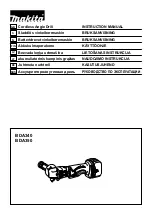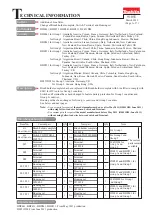
Page 36
EA Elektro-Automatik GmbH
Helmholtzstr. 31-37 • 41747 Viersen
Germany
Fon: +49 2162 / 3785-0
Fax: +49 2162 / 16230
www.elektroautomatik.de
PSI 9000 15U/24U Series
3.2.2
Current regulation / constant current / current limiting
Current regulation is also known as current limiting or constant current mode (CC).
The DC output current is held constant by the power supply, once the output current to the load reaches the ad
-
justed limit. Then the power supply automatically switches to CC. The current flowing from the power supply is
determined by the output voltage and the load’s true resistance. As long as the output current is lower than the
adjusted current limit, the device will be either in constant voltage or constant power mode. If, however, the power
consumption reaches the set maximum power value, the device will switch automatically to power limiting and
sets the output current according to I
MAX
= P
SET
/ U
IN
, even if the maximum current value is higher. The current set
value, as determined by the user, is only an upper limit.
While the DC output is switched on and constant current mode is active, then the condition “CC mode active” will
be indicated on the graphic display by the abbreviation CC and this message will be passed as a signal to the
analog interface, as well stored as status which can also be read as a status message via digital interface.
3.2.3
Power regulation / constant power / power limiting
Power regulation, also known as power limiting or constant power (CP), keeps the
DC output power of a power supply constant if the current flowing to the load in
relation to the output voltage and the resistance of the load reaches the adjusted
value according to P = U * I resp. P = U² / R. The power limiting then regulates the
output current according to I = sqr(P / R), where R is the load’s resistance.
Power limiting operates according to the auto-range principle such that at lower
output voltages higher current flows and vice versa in order to maintain constant
power within the range P
N
(see diagram to the right).
While the DC output is switched on and constant power mode is active, then the
condition “CP mode active” will be shown on the graphic display by the abbrevia
-
tion CP, as well stored as status which can also be read as a status message via
digital interface.
When using remote sensing, the power supply can deliver a higher voltage on the DC output
than adjusted, which results in additional power and may also cause the device to enter power
limitation without explicitly indicating “CP” in the display.
3.2.4
Internal resistance regulation
Internal resistance control (abbr. CR) of power supplies is the simulation of a virtual internal resistor which is in
series to the voltage source and thus also in series to the load. According to Ohm’s law, this causes a voltage
drop, which will result in a difference between adjusted output voltage and actual output voltage. This will work in
constant current mode as well as in constant power mode, but here the output voltage will differ even more from
the adjusted voltage, because then constant voltage is not active.
The adjustable resistance range of a particular model is given in the technical specifications. The voltage setting in
dependency of the resistance set value and the output current is done by calculation of a fast FPGA microcontroller,
being only a little slower than other controllers inside the control circuit. Clarification:
U
Act
= U
Set
- I
Act
* R
Set
P
Set
, I
Set
P
Ri
= (U
Set
- U
Act
) * I
Act
With resistance mode being activated the function generator will be unavailable and the actual
power value provided by the device does not include the power dissipation of Ri.
















































